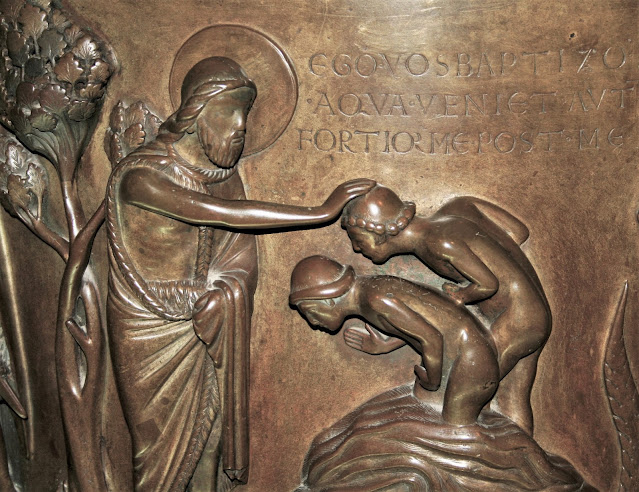The Noon Mass today at my parish in Manhattan celebrated the feast of All Souls by integrating the Fauré “Requiem” into the liturgy (Novus Ordo in English). It was beautifully performed and gave a highly dignified, aesthetically pleasing tone to the day. One thing did amuse me, however.
For whatever reason the soprano solo, “Pie Jesu” (which it has been my pleasure to sing for several concerts and funerals in the past) is set to follow the “Sanctus”, where normally there would be a “Benedictus”. Occasionally, in previous instances where I have heard or performed the piece in a real liturgy, the “Pie Jesu” has been shifted to Communion time. Today it was performed in its original place. This caused so much confusion among parishioners when it ended that I could only think of Pavlov’s dogs. Instead of standing or kneeling for the Consecration, which was the appropriate action, some were sitting, some were standing, some kneeling. (I was kneeling, in case you want to know.)
Clearly, the sitters, who appeared to make up the majority of the congregation, had lost their place because of an unfamiliar event. Which leads me to wonder, what does this say about people’s attentiveness at Mass to begin with? Ah, it’s that snake again!
For whatever reason the soprano solo, “Pie Jesu” (which it has been my pleasure to sing for several concerts and funerals in the past) is set to follow the “Sanctus”, where normally there would be a “Benedictus”. Occasionally, in previous instances where I have heard or performed the piece in a real liturgy, the “Pie Jesu” has been shifted to Communion time. Today it was performed in its original place. This caused so much confusion among parishioners when it ended that I could only think of Pavlov’s dogs. Instead of standing or kneeling for the Consecration, which was the appropriate action, some were sitting, some were standing, some kneeling. (I was kneeling, in case you want to know.)
Clearly, the sitters, who appeared to make up the majority of the congregation, had lost their place because of an unfamiliar event. Which leads me to wonder, what does this say about people’s attentiveness at Mass to begin with? Ah, it’s that snake again!






































